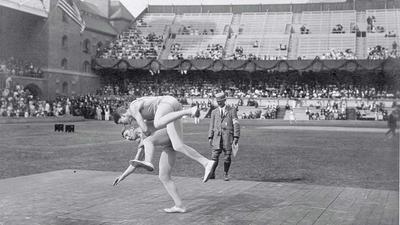Over the decades, the grandeur and essence of the Olympic Games have been shaped by numerous transformations. Among these transformations, the evolution of rules and scoring systems in Olympic Wrestling stands as an intriguing and impactful narrative. In this discourse, we will delve deep into the details of how these changes have shaped the sport, and the implications they have had on the competitive spirit and performance of athletes.
The Olympic Wrestling, a sport of strength, strategy, and endurance, has been an integral part of the Games since antiquity. However, over time, it has undergone significant modifications in its rules and scoring mechanisms. These modifications, brought forth by the International Federation of Associated Wrestling Styles (FILA) and the International Olympic Committee (IOC), have aimed at making the sport more competitive, engaging, and fair.
In the forthcoming sections, we will examine these changes chronologically, analyze their impacts on the performance of athletes, and reflect on the controversies they have generated. Furthermore, we will explore how these modifications have redefined the essence of the sport, driving it to become a more dynamic and thrilling spectacle. So, fasten your seatbelts as we embark on this enlightening journey into the transformation of the Olympic Wrestling.

The Historical Evolution of Wrestling Rules
In the context of the Olympic Games, wrestling has been a prevalent sport since antiquity. Its evolution has been punctuated by significant shifts in rules and scoring systems, contributing to the ever-changing landscape of the sport.
The initial version of wrestling in the Olympics was quite different from what we see today. It was more akin to what we would recognize as a street fight, with virtually no rules in place. However, as the sport evolved, so did its structure and regulations.

The Advent of Weight Classes
One of the most significant transformations in the sport was the introduction of weight classes. This occurred during the 1904 St. Louis Olympics, primarily to ensure a level playing field. The implementation of weight classes divided wrestlers into categories, based on their weight. This resulted in fairer competition, as it eliminated physical size as a determinant of success.
- Lightweight: Wrestlers weighing less than 70 kilograms
- Middleweight: Wrestlers weighing between 70 and 85 kilograms
- Heavyweight: Wrestlers weighing over 85 kilograms
The Introduction of a Points-based Scoring System
Another major change in the sport came with the institution of a points-based scoring system, which replaced the previous system where a match was won by pinning the opponent. This modification was introduced during the 1924 Paris Olympics.
In this new system, points were awarded for different moves and holds. Some of the scoring rules include:
- Takedown (2-5 points): Bringing an opponent to the ground from a standing position
- Reversal (1 point): Escaping from the bottom and gaining control over the opponent
- Near Fall (2-3 points): Holding the opponent’s shoulders close to the mat
Reforms in the 21st Century
In recent years, the sport has undergone further changes, primarily to make the scoring system more accessible and appealing to spectators. In 2005, the International Federation of Associated Wrestling Styles (FILA) introduced a set of reforms that aimed to make matches more dynamic and comprehensible.
Two-Period Structure
One of the most notable changes was the shift to a two-period structure. Each match now consists of two three-minute periods, with a 30-second break in between. This change was made to increase the pace of the matches and encourage more offensive wrestling.
Cumulative Scoring
In addition to the two-period structure, the scoring system was also modified. The previous system of counting the best two out of three periods was replaced with a cumulative scoring system. This system rewards wrestlers who are consistently aggressive throughout the match, rather than those who win individual periods.
The Impact of these Changes on the Sport
These transformations have significantly impacted wrestling in the Olympic Games. The institution of weight classes and a points-based scoring system has led to more balanced competition. Furthermore, the recent reforms by FILA have made the sport more appealing to spectators by increasing the pace of matches and promoting offensive wrestling.
Nonetheless, the essence of wrestling remains the same: it is a test of strength, skill, and strategy. While the rules and scoring systems may have evolved, the heart of wrestling remains firmly rooted in its ancient origins.
Conclusão
In conclusion, the transformation of wrestling rules and scoring systems in the Olympic Games have indubitably shaped the sport into what it is today. The inception of weight classes during the 1904 St. Louis Olympics was a game-changing decision, as it ensured fair competition by eliminating physical size as a determinant of success. The transition to a points-based scoring system during the 1924 Paris Olympics was another significant shift that made the sport more competitive and strategic.
In the 21st Century, the International Federation of Associated Wrestling Styles (FILA) initiated reforms to make the sport more dynamic and spectator-friendly. The introduction of a two-period structure and a cumulative scoring system rewarded consistent aggression, and promoted offensive wrestling.
These modifications have not only led to more balanced competition but have also made the sport more engaging for spectators. However, despite the changes in structure and rules, the heart of wrestling remains unchanged: it is still a test of strength, skill, and strategy, firmly rooted in its ancient origins. In essence, while the exterior of wrestling may have evolved, its core remains intact, a testament to the timeless appeal of this age-old sport.
